Parables in Stained Glass (3)
The parable of the Lost Sheep is about a shepherd who left his flock (those who were already saved) to find the one sheep that was lost, and when he found it, rejoiced. I have seen many windows that show Jesus as the good shepherd, but only a small number that portray the parable. The part-window from Holy Spirit Cathedral, Palmerston North [1] shows the flock tucked away in the sheepfold.
The two-panel one on the right [2] from
St Andrews Cathedral, Sydney shows Jesus finding the sheep, and then rejoicing with his flock.
Two further examples which show Jesus as the Good Shepherd, but could also be interpreted as the parable of the lost sheep. The first, from St John the Evangelist, Balmain, Sydney [3] is the most colourful, whereas the one from St James, Southbridge, South Canterbury [4] is beautiful in it’s simplicity.
The parable of the weeds (or darnel) was, like the parable of the sower, explained to the disciples. Jesus sowed good seed, the Devil came along and sowed bad darnel seed, and the two grew together, almost indistinguishable from one another. Man was concerned and wanted to uproot the bad, but Jesus said “no”, leave it to the end when the angels will sort the good from the bad and consign the bad to Hell. This window from St Mary of the Angels, Wellington [5]illustrates the parable - note the farmer and his servants sleeping. To me there are two lessons to be learnt from this parable: don’t get complacent about the Lord’s work, and leave it to God to sort out the bad from amongst us.
The parable of the rich man and Lazarus is about mercy and reward. The two windows from St Patrick’s Cathedral, Palmerston North [6] and St Mary Abbots, Kensington, London [7] show the scene while they were still alive - the rich people partying, Lazarus crouched in the doorway being fed scraps and the dogs licking his sores. I have not seen a window that shows the rich man appealing to Lazarus across the gap between Heaven and Hell, but I am sure there is one somewhere. To me the lesson is quite simple - be merciful, as God is merciful, and be ready for judgement day, because it will be too late to change my ways then!
The parable of the Lost Coin is depicted in this window from St Andrews Cathedral, Sydney [8], with the lost coin being shown as a little dot of light beneath the broom. The parable is very similar to the lost sheep and, to a certain extent, the merchant and the pearl without price - there is much rejoicing in Heaven when one lost soul is found. Thinking back to my own time of finally answering God’s call to change, I can recall the rejoicing in my own household, let alone in Heaven. Can you let Jesus find you?
In the parable of the workers in the vineyard, the vineyard owner hired workers at the beginning of the day, as seen in this window from St Mary of the Angels, Wellington [9]. Later in the day, he went and hired more (presumably less willing or able) as seen in the left hand panel of this window in St Andrews Cathedral, Sydney [10]. However, at the end of the day they were all paid the same, with the subsequent unrest shown in the right-hand panel. To me, the message is that God treats everyone equally - I cannot claim any extra privilege on judgement day just because of everything I might do for God.
The final parable that I have a window for is the parable of the wicked tenants. The window [11] is in the foyer of First Presbyterian Church, Invercargill. It limits itself to portraying the vineyard as the owner left it, with the wall, winepress and vines. The rest of the parable portrays what happened to Jesus. The Jews, as tenents, killed Jesus as the owner’s son and therefore lost the right to be in the Kingdom, represented in the parable by the vineyard. Do you want to lose the right to enter the Kingdom of God?

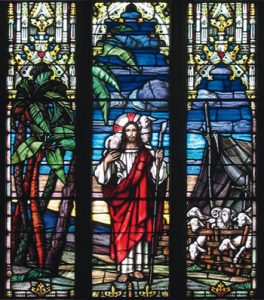
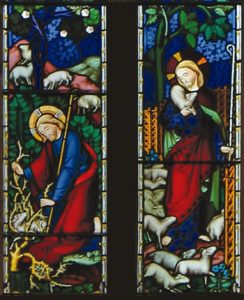
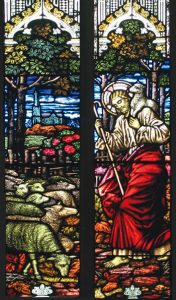
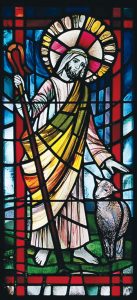
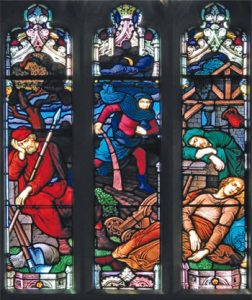
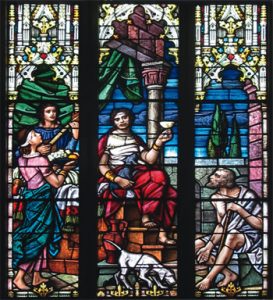
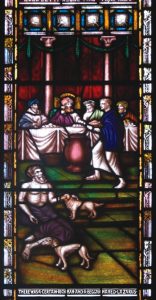

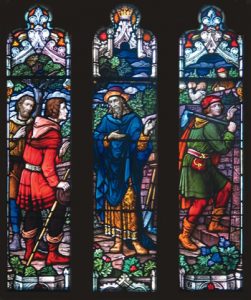
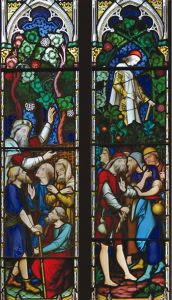
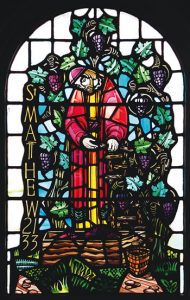
 Entries(RSS)
Entries(RSS)